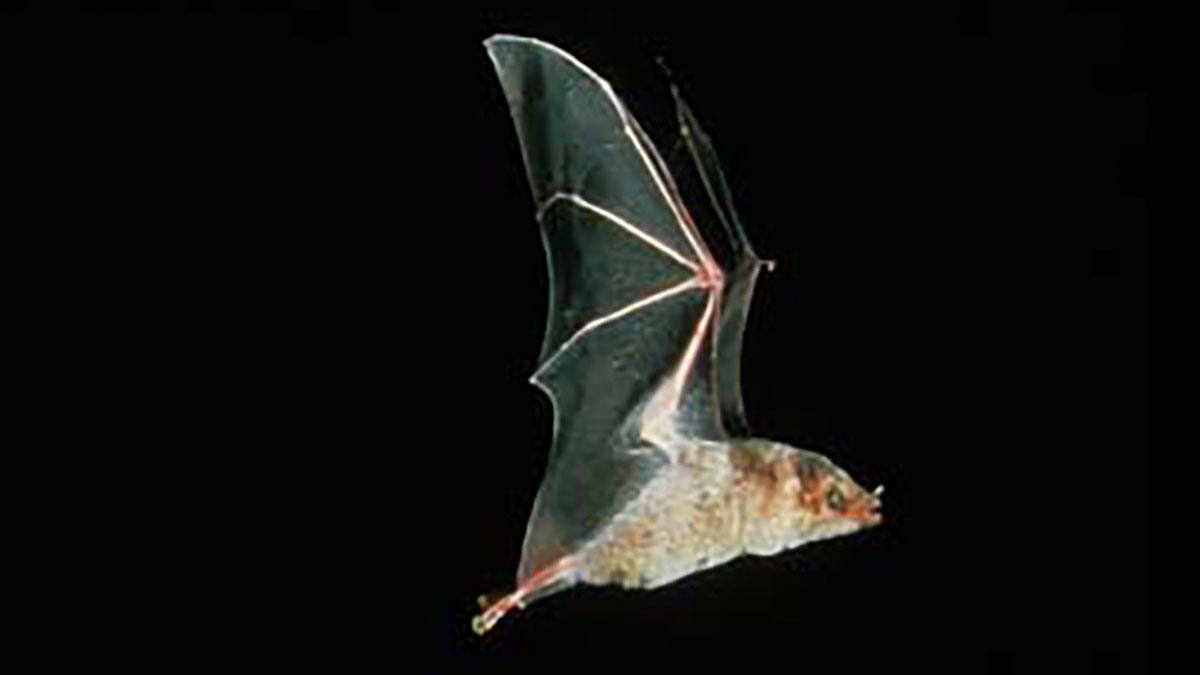WASHINGTON, DC — The U.S. Fish and Wildlife Service is seeking public comments on a draft revised recovery plan for the Mexican long-nosed bat, an endangered migratory bat that travels annually between Mexico and the Southwestern United States to follow the blooming period of flowering agaves and cacti. The bat has been on the list of endangered species since 1988.
“Mexican long-nosed bats are important pollinators that feed on the nectar and protein-rich pollen of more than 50 species of plants in the Southwest,” said Dr. Jade Florence, Fish and Wildlife Biologist with the Service’s Austin Ecological Services Field Office. “Unfortunately, the loss of food resources and disturbance by humans has contributed to a range-wide decline in their population. This recovery plan aims to ensure the conservation and long-term viability of the Mexican long-nosed bat in the wild such that the species no longer requires protections under the Endangered Species Act (ESA).”
Measuring up to 3.75 inches, the grayish-brown bat species boasts a long muzzle and three-inch tongue, which is adapted for feeding on the flower clusters that emerge from agaves at night.
In the U.S., Mexican long-nosed bats spend spring and summer roosting in maternity colonies in high-elevation caves and mines in west Texas and southwestern New Mexico. The two known roost sites in the U.S. include a cave located in Big Bend National Park, and another located in a Bureau of Land Management (BLM) Wilderness Protected Area in New Mexico, which are both federally protected and monitored annually.
The primary threats to the species across their range in Mexico and the U.S. include the reduced availability of adequate roost sites, a lack of sufficient forage plant species and habitat connectivity to support annual migratory movements, recreational human disturbance in the form of people entering bat roosts and hindering their survival, and lack of protection for several roosts.
While they are not regulatory, recovery plans provide a framework for the recovery of a species so that ESA protection is no longer necessary. The draft revised recovery plan describes actions that are considered necessary for recovery of the species, establishes delisting criteria and estimates the time and cost to implement recovery actions for the species.
The overall recovery strategy for the Mexican long-nosed bat involves preserving, restoring, and managing their habitat, along with the resources necessary to support resilient populations of these species and the ecosystems on which they depend.
Specific recovery objectives include effective protection and management of known critical roosts, providing adequate food resources through protection of existing foraging habitat and restoration and management of agave habitat, environmental education to gain support for conservation and management practices, and research on biology, demography and ecology of the species.
Recovery plans are guidance and not regulatory documents, and no agency or entity is required by the ESA to implement actions in a recovery plan.
The FWS encourages the public, federal and state agencies, tribes, and other stakeholders to review the draft recovery plan and provide comments during the 60-day public comment period, ending on March 7, 2023. To review the plan and find out how to submit a public comment, visit https://ecos.fws.gov/ecp/species/82….

The Mexican Long-Nosed Bat
Subscribe to the LIVE! Daily
Required






Post a comment to this article here: